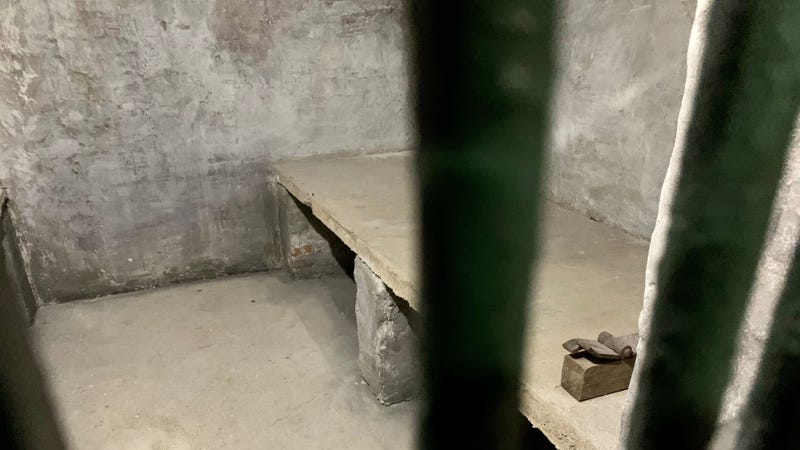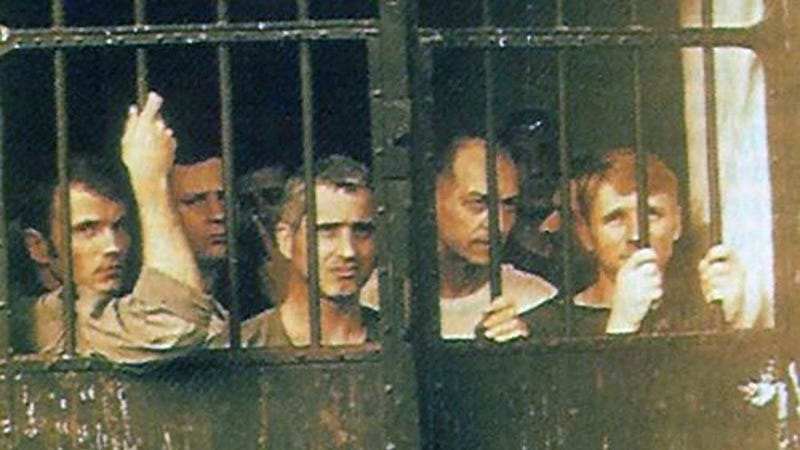
A recently opened exhibit at the American Heritage Museum in Massachusetts tells the stories of the American prisoners of war who were held in Hỏa Lò Prison, better known as the "Hanoi Hilton" in North Vietnam in an interactive way.
The exhibit features two original cells that held American POWs such as John McCain, James Stockdale, Bud Day, and Joseph Kittinger.

“Probably the most incredible opportunity that came along was having a part of the original prison, the Hanoi Hilton,” said Robert Collings, museum president.
The Hanoi Hilton was where most of the captured American airmen cycled through, explained Collings.
“We’re in a position now to build an exhibit that will allow people to understand what that means, to preserve through 5, 6, 7 years of hell,” Collings said. “Unrelenting hell is what they went through.”
Materials used to construct the cells were saved from the demolition of the Hanoi Hilton in the 1990s, stored first in Vietnam and then later for years in Canada.
The exhibit opened to the public on Feb. 12, – 50 years to the day that the first American prisoners of war were released from Hỏa Lò.
Retired Air Force Col. Thomas H. Kirk, a POW from 1967 to 1973, recalled that in a 30-mile ring around Hanoi there were 19,000 antiaircraft guns protecting the city.
“It was the most heavily defended airspace in the history of air warfare,” he said.

If an aircraft went down in the area around Hanoi, rescue missions were not undertaken because it was too dangerous, according to Kirk.
“At one point in the war if you were an F-105 pilot it was a 100-mission tour and statistically you would last 60 missions before you were shot down,” said retired Air Force Lt. Col. Robert B. Jeffrey, a POW from 1965 to 1973.
Kirk recalled his aircraft being struck by enemy fire. After ejecting from the plane, he landed in a field and was captured by the North Vietnamese in a plowed field.
“They blindfolded me, bound and gagged me, put me on a truck and bumped me over the 27 miles in the back of a dump truck into the Hanoi Hilton to begin 6 years,” he said.
Kirk and Jeffrey described the torture they endured while POWs.
“I was put in a cell, not seeing another soul and I’m left by myself,” Kirk recalled. “It was the worst period of my life, including the torture. I wanted to die. There is no question about that. Everything in my life had been taken from me.”
That changed one morning when Kirk got up, stomped his foot and had a thought that changed his whole world.
“I’ve got to dig deep into my soul somewhere and I’ve got to find the strength and courage to handle this,” he said. “If I do everything humanly possible, someday I will go home.”
With that new determination, Kirk found the will and fortitude to survive.
“It was just about helping each other, that’s all you could do,” he said.
The museum was selected to receive the materials in 2020 and work on the exhibit began in 2022.
The American Heritage Museum is located at 568 Main Street in Hudson, Massachusetts.
Reach Julia LeDoux at Julia@connectingvets.com.



